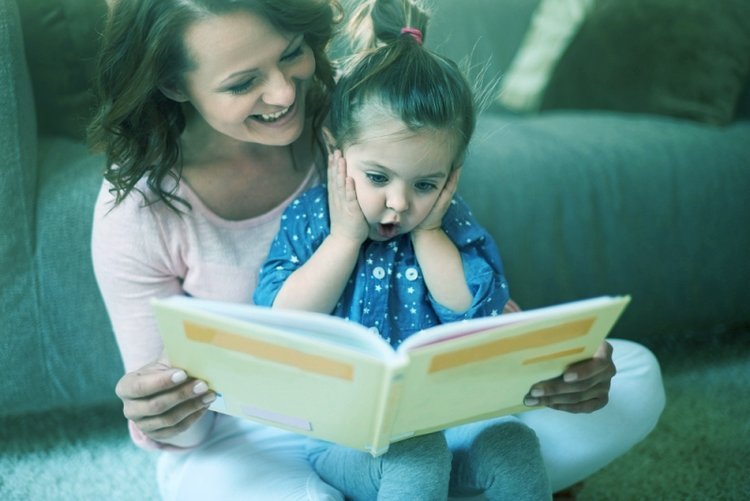How to choose poems for children
Before introducing your kid to poetry, you need to consider a few points. The aim of teaching poetry to your child is to cultivate admiration in them towards words, sounds, and the meaning of the poems. So, selecting poems that will nurture this trait is essential.

Poetry is a wonderful way to introduce children to the beauty of language, rhythm, and imagination. Choosing the right poems for children can inspire a lifelong love for literature and creativity. However, selecting poems that resonate with young minds requires thoughtful consideration of their interests, age, and comprehension levels. This guide will help you choose the perfect poems for children, ensuring they enjoy and learn from the experience.
Why Poetry is Important for Children
Poetry offers numerous benefits for children:
-
Language Development: Poems help children expand their vocabulary and improve their language skills.
-
Emotional Expression: Poetry provides a medium for children to explore and express their emotions.
-
Imagination and Creativity: Poems spark creativity and encourage imaginative thinking.
-
Listening Skills: Rhythmic and rhyming poems improve listening and auditory processing skills.
-
Cultural Appreciation: Poetry introduces children to different cultures and perspectives, fostering empathy and understanding.
Factors to Consider When Choosing Poems for Children
1. Age Appropriateness
Children of different ages have varying levels of comprehension and interests. Here are some tips for selecting age-appropriate poems:
-
Preschoolers (Ages 3-5): Choose short, simple poems with repetitive rhymes and rhythms. Nursery rhymes and playful verses are ideal.
-
Early Elementary (Ages 6-8): Look for poems with engaging stories, humor, and relatable themes. Rhyming poems and ones with vivid imagery work well.
-
Older Elementary (Ages 9-12): Introduce children to more complex poems that explore deeper themes and emotions. Poems with metaphor, symbolism, and descriptive language can captivate this age group.
2. Relatable Themes
Children connect better with poems that reflect their experiences, interests, and emotions. Consider themes such as:
-
Nature and animals
-
Friendship and family
-
Adventures and imagination
-
Seasons and holidays
-
Everyday experiences, like school or playtime
3. Rhymes and Rhythm
Rhyming and rhythmic poems are particularly appealing to children. They make the poem easier to remember and more enjoyable to recite. Look for poems with a catchy rhythm or playful rhymes to keep young readers engaged.
4. Visual Appeal
Illustrated poetry books can enhance the reading experience for children. Vibrant, colorful illustrations help bring the poem to life and make it more engaging. For younger children, choose books with large, easy-to-read fonts and captivating visuals.
5. Positive Messages
Select poems that convey positive values and life lessons, such as kindness, courage, and perseverance. These messages can leave a lasting impression on young minds and help shape their character.
Types of Poems for Children
1. Nursery Rhymes
Nursery rhymes are a classic choice for young children. Their simple language, repetitive structure, and catchy rhythm make them a favorite among preschoolers. Examples include "Twinkle, Twinkle, Little Star" and "Jack and Jill."
2. Humorous Poems
Humorous poems are a great way to make children laugh and enjoy reading. Look for poets like Shel Silverstein and Roald Dahl, whose whimsical verses and clever wordplay delight readers of all ages.
3. Narrative Poems
Narrative poems tell a story, making them perfect for older children who enjoy adventures and tales. Examples include "The Owl and the Pussycat" by Edward Lear and "The Tale of Custard the Dragon" by Ogden Nash.
4. Nature Poems
Nature poems encourage children to appreciate the world around them. Poems about animals, plants, and seasons can foster a sense of wonder and curiosity. Mary Oliver and Robert Frost are great poets to explore for nature-themed works.
5. Inspirational Poems
Inspirational poems can motivate children and boost their confidence. Poems like "Dreams" by Langston Hughes and "If" by Rudyard Kipling offer valuable life lessons and encourage resilience.
Tips for Introducing Poetry to Children
1. Read Aloud
Reading poems aloud brings their rhythm and melody to life. Use expressive tones and gestures to captivate your child’s attention and make the experience enjoyable.
2. Encourage Participation
Invite children to recite poems with you or act them out. This interactive approach helps them connect with the poem and improves their memory and confidence.
3. Discuss the Poem
After reading a poem, ask your child questions about it. Discuss the meaning, emotions, and imagery in the poem. Encourage them to share their interpretations and thoughts.
4. Create a Poetry Routine
Incorporate poetry into your daily routine. Read a poem together during bedtime or over breakfast. Regular exposure to poetry makes it a familiar and enjoyable part of their lives.
5. Write Poetry Together
Encourage your child to create their own poems. Start with simple rhymes or acrostic poems. Writing poetry fosters creativity and helps children express themselves.
Recommended Poetry Collections for Children
Here are some beloved poetry collections to consider:
-
"Where the Sidewalk Ends" by Shel Silverstein: A treasure trove of humorous and imaginative poems.
-
"A Child’s Garden of Verses" by Robert Louis Stevenson: A timeless collection exploring childhood experiences.
-
"The Puffin Book of Fantastic First Poems" edited by June Crebbin: Perfect for introducing young readers to poetry.
-
"Poems to Learn by Heart" by Caroline Kennedy: A beautifully curated collection of memorable poems.
-
"Read-Aloud Rhymes for the Very Young" edited by Jack Prelutsky: A delightful compilation for preschoolers.
Common Mistakes to Avoid When Choosing Poems for Children
1. Overly Complex Language
Avoid poems with complicated language or abstract themes that may confuse or overwhelm children.
2. Ignoring Interests
Choose poems that align with your child’s interests. A child who loves animals, for instance, will enjoy poems about wildlife more than abstract works.
3. Neglecting Fun
While educational value is important, don’t forget that poetry should be fun and entertaining for children. Prioritize joy and engagement.
4. Overloading with Lengthy Poems
Long poems can lose a child’s attention. Start with short, engaging poems and gradually introduce longer ones as their interest grows.
Conclusion
Choosing poems for children is an art that requires understanding their age, interests, and emotional needs. By selecting age-appropriate, engaging, and meaningful poems, you can spark a love for poetry that lasts a lifetime. Remember to make poetry a fun and interactive experience, and don’t hesitate to explore different types and themes. With the right approach, poetry can become a cherished part of your child’s journey into the world of literature.













